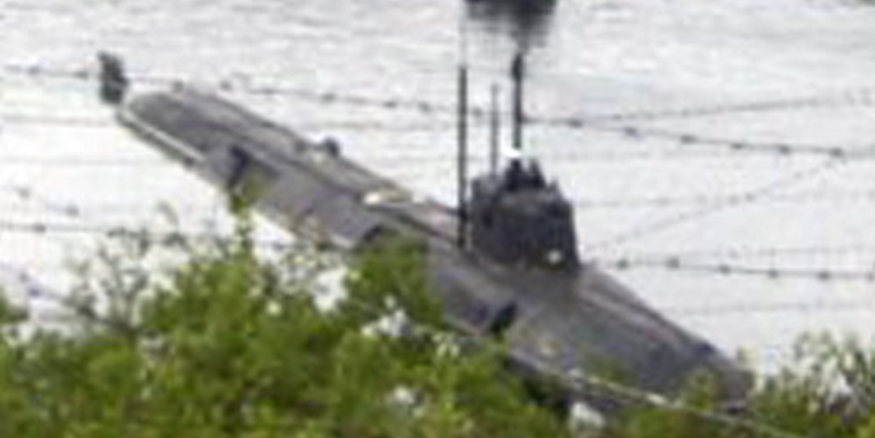- A Russian navy submarine caught fire on Monday, killing 14 sailors on board.
- Two independent Russian news outlets reported that the vessel was the AS-12 “Losharik,” a nuclear-powered vessel that US officials have said is designed to cut undersea cables that keep the world’s internet running.
- Moscow officials have remained secretive about the type of vessel and whether it was nuclear-powered, prompting accusations of a cover-up.
- President Vladimir Putin canceled a scheduled event on Tuesday and told his defense minister to “personally receive reports” on the investigation into the accident, Radio Free Europe/Radio Liberty reported.
- Visit Business Insider’s homepage for more stories.
The Russian navy submarine that Russian media outlets have identified as the one that caught fire during a mission on Monday, killing 14 sailors on board, may have been designed to cut undersea internet cables.
The vessel caught fire near the naval base of Severomorsk on Monday, and the sailors died of smoke inhalation, Russia’s defense ministry said in a statement.
On Tuesday, Russian Vladimir Putin called the incident a “great loss,” canceled a scheduled event, and called an urgent meeting with his defense minister, Sergei Shoigu. Putin also ordered an inquiry into the accident and asked Shoigu to “personally receive reports” on it, Radio Free Europe/Radio Liberty reported.
The Russian military revealed that many of the sailors who perished in the incident were decorated, high-ranking officers, which could speak to the technicality of the submarine. Moscow, however, has remained cagey on the details of the vessel and its work, prompting suspicion and accusations of a cover-up.

According to the independently-run RBC news agency and Novaya Gazeta newspaper, the vessel was the AS-12, a nuclear-powered vessel. Both outlets cited unnamed sources in their reporting.
The AS-12, also known as "Losharik," was designed in the 1980s and launched in 2003, but details of its capabilities and work have largely remained secret, Radio Free Europe/Radio Liberty and Reuters reported. An unarmed, nuclear submarine, the Losharik and its 25-man crew can operate at depths greater than 10,000 feet, ABC News reports.
BBC Monitoring described US officials as saying the AS-12 is designed to cut undersea cables that keep the world's internet running.
US and other Western officials have long warned that Russian ships have been active near major undersea fiber-optic cables that carry calls, emails, texts, and trillions of dollars' worth of daily financial transactions.
"The Russians talk about these ships in this program doing bathymetric research and deep-ocean research, meaning they do stuff on the sea floor," Bryan Clark, a former US Navy officer and a submarine warfare expert, told Business Insider. "If they are doing research on the sea floor with a military submarine, they are probably also able to interdict or disrupt undersea cabling or other undersea infrastructure, like pipelines."
"These submarines might also be used to install, remove, or disrupt seabed sonar arrays" to either bolster Russia's own defenses or dismantle the defenses of another country. The Russian defense ministry said the fire happened while the vessel was conducting bathymetric surveys - measuring the depth of the sea bed.

The defense ministry on Tuesday described the submarine vessel as one designed to study the bottom of the sea in the interests of the navy, according to a statement in Russian carried by the Interfax news agency. Moscow has provided no specific information on the type or model of the vessel, saying only that the details are a "state secret," according to AFP.
"It belongs to the highest level of classified data, so it is absolutely normal for it not to be disclosed," Kremlin spokesman Dmitry Peskov told reporters Wednesday.
Norwegian authorities said on Tuesday that they had not detected any abnormal radiation after the incident aboard the suspected nuclear submarine, Reuters reported.
The Bell, a Russian news site critical of the government, likened Russia's apparent secrecy around Monday's fire to the Chernobyl nuclear disaster in 1986.
According to Reuters, the site said: "Nearly a day without information about the accident in a nuclear facility and the need to look out for Norwegian statements about the level of radiation should have given a shudder to those who remember the Chernobyl nuclear power station."
